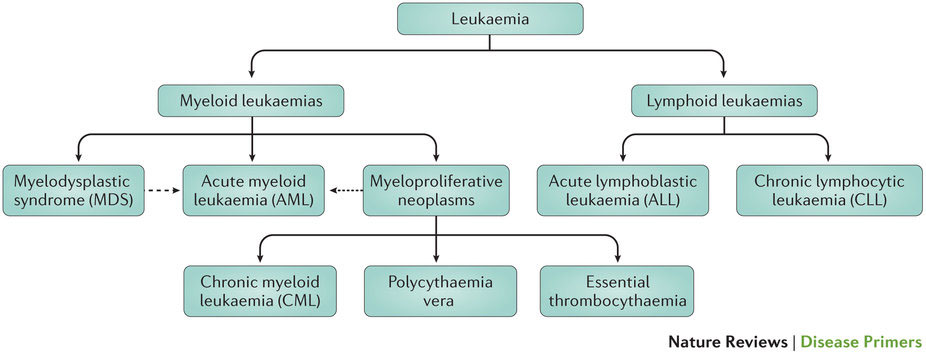急性骨髄性白血病
Acute myeloid leukaemia
2016年3月10日 Nature Reviews Disease Primers Article number: 16010 (2016) doi: 10.1038/nrdp.2016.10

急性骨髄性白血病(AML)は未熟な造血幹細胞または前駆細胞のクローン性増殖を特徴とする疾患である。骨髄細胞の分化異常によって、未熟な悪性細胞が増加する一方で、分化した赤血球、血小板および白血球は減少する。この疾患はいずれの年齢でも発症するが、そのほとんどは高齢者(60歳以上)に起こる。AMLでは、典型的に、骨髄不全を原因とする症状の急激な発症が認められ、無治療の場合、数週間から数か月で死に至る。ゲノム全体像の決定により、AMLは、ドライバー変異が比較的少なく、遺伝的不安定性が低いことが明らかになった。白血病誘発の早期に、エピジェネティック調節に関与する遺伝子の変異がよく見られる。AMLの細分類は、血液細胞および骨髄細胞の形態学および細胞遺伝学に基づいて行われているが、現在、特異的な突然変異解析も取り入れられている。この35年間、用量漸増および優れた支持療法を中心として、若年患者への治療が改善されてきた。再発リスクが高いと考えられる患者の寛解を確実にするために同種造血幹細胞移植を行うことができる。疾患病態生理学に関する理解の深化に伴い、現在、非常に多くの新規薬物(特異的な生化学的経路を標的とした薬剤や免疫治療薬など)が臨床試験で評価されている。これらの進歩は、楽観させる有効な根拠となるが、特に高齢者での死亡率は高いままである。
PrimeView
急性骨髄性白血病は、未熟な骨髄前駆細胞がそれぞれに対応する分化した細胞を犠牲にして拡大する悪性疾患である。このPrimeViewでは、いずれの年齢でも発症するが、そのほとんどが高齢者(60歳以上)に起こるこの疾患の発症機序を中心に取りまとめる。
本Primerの図解サマリー

